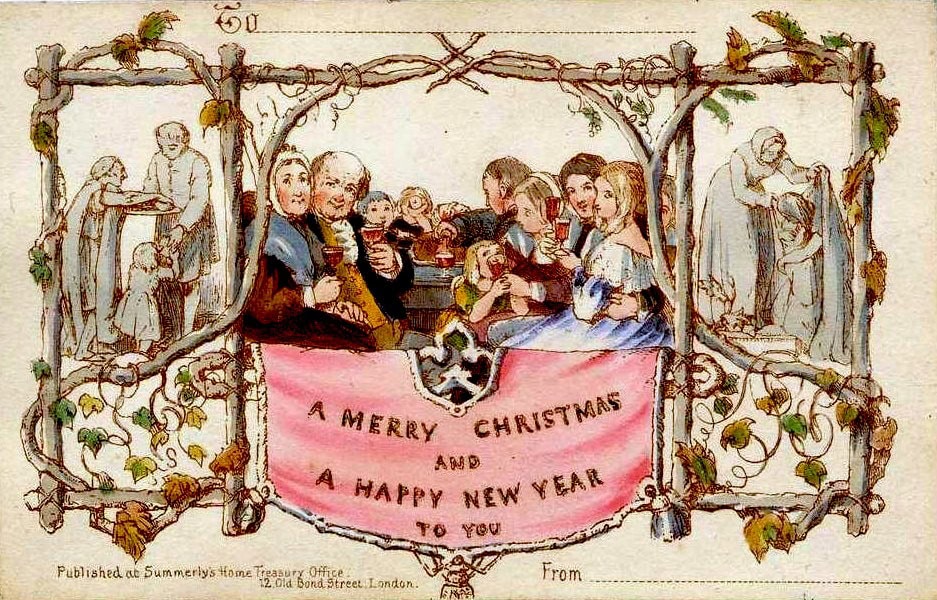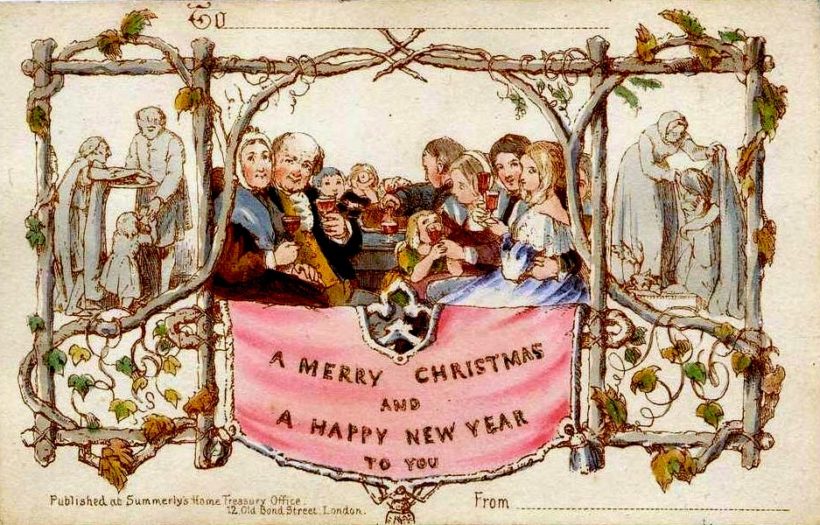Before sending holiday cards this year, read this.
Between Thanksgiving and New Year’s Day, trash generation increases by 25%, creating an additional one million tons of trash per week in the United States. The worst holiday offenders are well-intentioned but disposable items like cards, which spend a moment in the hand and years in a landfill. The more than 2.5 billion holiday cards sold in the U.S. each year use enough paper to fill a football field ten stories high! That’s a lot of cards, and that’s a lot of waste.
A Brief History of Greeting Cards
Sending personal messages on paper dates back to ancient Egypt, but commercially produced cards were not invented until the 1840s when a popular British businessman named Henry Cole asked a printer to produce a Christmas greeting that could be sent to his many friends. The concept was well received, and by the 1860s, Christmas cards were being mass-produced for public consumption. With the rise of the affordable Penny Post, all classes of society could send their greetings to loved ones near and far, and in 1875 Luis Prang made the first American Christmas card in his Boston print shop. The rest, as they say, is history.

First Christmas card. 1843.
How it’s made
The majority of holiday cards today are made of cardstock, which is a mix of hardwood and softwood pulp blended with textile waste. Forestry practices vary widely, and not all certified sustainable wood is deserving of the title, meaning Forest Stewardship Council-certified holiday cards may actually be made of illegally harvested timber. The ink the card is printed with can be toxic, although the more harmful oil-based inks are rapidly being replaced with soy. Soy-based ink is easier to extract before recycling and releases less volatile organic chemicals (VOCs) as it dries, helping manufacturers meet EPA air quality standards. Cards destined for glossy finishes, such as those with photos, are then covered in a chemical film. Each step of the manufacturing process from raw material collection to postal delivery requires transportation and therefore fossil fuels, begging the question: How can we do better?
Environmentally friendly Alternatives
Greeting cards are an important part of the holiday season, especially for those who don’t have the opportunity to spend time with distant friends and family over the year. Luckily, a multitude of eco-friendly alternatives exist, so helping the environment doesn’t mean saying goodbye to a cherished tradition. Consider using one of the following alternatives to traditional cards this season instead:
- Call (or video chat!) loved ones and share your season’s greetings with them directly.
- Send a card electronically. Organizations like World Wildlife Fund and The Nature Conservancy offer free e-cards perfect for the holidays.
- Get rid of the ‘list’ and only send physical cards to loved ones who don’t use email or who aren’t available by phone. If everyone sent one less card, it would save 50,000 cubic yards of paper per year.
- Skip the envelope and send out postcards instead.
- Choose 100% post-consumer recycled paper and eliminate the use of raw materials.
- Use an alternative to wood-based paper like hemp or vegetable fiber.
- Avoid cards with glossy or metallic finishes which make them impossible to recycle.
- Ask your dentist, veterinarian, and others to take you off their holiday card list.
Give a gift to the environment this year and make your holiday season eco-friendly.


